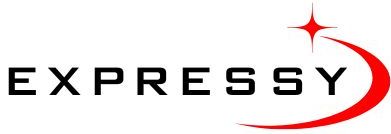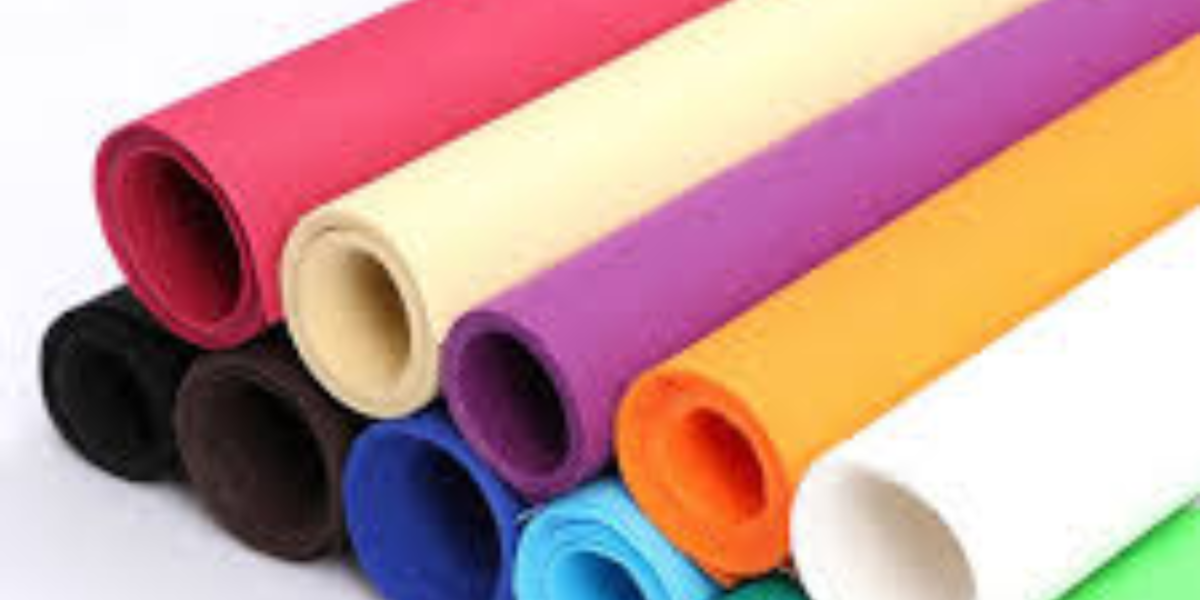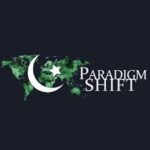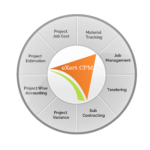In recent years, the textile industry has witnessed a significant shift toward nonwoven fabrics, and among the various types available, polypropylene (PP) spunbond nonwoven fabric has emerged as a leading choice. Known for its exceptional durability, versatility, and sustainability, PP spunbonded materials are increasingly utilized in diverse applications across multiple sectors. This Pulkit Plastic Products explores the properties, production processes, applications, and market dynamics of PP spunbond nonwoven fabric, while also addressing key components such as suppliers and manufacturers.
What is PP Spunbond Nonwoven Fabric?
PP spunbond nonwoven fabric is composed of polypropylene fibers that are bonded together through a thermal process, eliminating the need for weaving or knitting. The resulting fabric is lightweight yet strong, offering impressive tensile strength and tear resistance. The manufacturing process involves extruding molten polypropylene into filaments, which are then spread out onto a conveyor belt and subjected to heat and pressure to fuse the fibers together. This method creates a porous structure that allows for excellent airflow and liquid repellency.
One of the standout characteristics of PP spunbond nonwoven fabric is its ability to be engineered for specific performance attributes. Manufacturers can tailor its properties—such as weight, opacity, strength, and texture—making it a highly customizable option for varying applications. This adaptability, coupled with its cost-effectiveness, is a primary reason why it has gained traction among a wide range of industries.
The Advantages of PP Spunbond Nonwoven Fabric
The advantages of Non woven cloth manufacturers are numerous, making it a preferred material for many applications. One of its most significant benefits is its chemical resistance. The polypropylene base allows the fabric to withstand exposure to a wide range of chemicals, making it ideal for use in industrial settings and packaging solutions. Additionally, this fabric exhibits excellent abrasion resistance, enhancing durability in demanding environments.
Another notable property is its environmental friendliness. As the world shifts towards sustainability, many businesses seek products that have a reduced ecological footprint. PP spunbond nonwoven fabrics can be recycled, and some variants are produced from recycled polypropylene. Manufacturers are actively working to position these fabrics as eco-conscious alternatives to conventional textiles, promoting the idea of a circular economy.
Moreover, the lightweight nature of PP spunbond nonwoven fabric contributes to lower shipping and handling costs. Its ability to be produced in high volumes further amplifies its efficiency in supply chains. Manufacturers can produce wide rolls of fabric, reducing the need for further processing. This efficiency not only supports cost savings but also enables quicker deployment in various industrial applications.
Key Applications of PP Spunbond Nonwoven Fabric
PP spunbond nonwoven fabric spans a wide array of applications, showcasing its versatility. One of the most well-known uses is in the production of disposable items, such as surgical gowns, masks, and sterilization wraps in the healthcare sector. The fabric’s barrier properties prevent the passage of contaminants, ensuring safety and hygiene in medical environments.
In addition to healthcare, PP spunbond materials find extensive applications in the agriculture industry. They are commonly utilized as mulch mats, greenhouse covers, and seedling protection sheets. These applications help control soil temperature, retain moisture, and prevent weed growth, contributing to enhanced crop yields.
Another significant application is in the production of geotextiles for construction and landscaping. PP spunbond nonwoven fabric serves as a filter layer to prevent soil erosion and facilitate proper drainage. Its strength and flexibility make it suitable for a variety of civil engineering projects. Furthermore, the fabric is utilized in home furnishings and automotive interiors, emphasizing its adaptability to diverse consumer demands.
The Role of Non Woven Cloth Manufacturers
The growth of the nonwoven fabric industry has been supported by a wide array of non woven cloth manufacturers who specialize in producing innovative solutions tailored to specific market needs. These manufacturers harness advanced technologies to create high-quality spunbond fabrics that meet international standards. By investing in research and development, they can refine production processes and develop novel applications that enhance performance.
Choosing the right non woven fabric manufacturer entails evaluating their capabilities, production capacity, and adherence to quality control measures. Factors such as certifications, a proven track record, and customer reviews can guide organizations in selecting a reliable supplier. Responsiveness to market trends and the ability to customize products based on specific requirements are also key indicators of a manufacturer’s quality.
The global landscape of non woven cloth suppliers is competitive, marked by innovation and rapid technological advancement. As businesses strive for sustainable solutions, many manufacturers are focusing on eco-friendly processes, including the use of biodegradable materials and water-efficient production techniques. This shift enhances their appeal to environment-conscious consumers and industries.
Best Practices for Nonwoven Fabric Suppliers
For Non woven fabric manufacturer maintaining a steady supply chain and optimizing operations are crucial to meeting the growing demand for PP spunbond nonwoven fabric. Leading suppliers often implement best practices designed to enhance operational efficiency and product quality. This includes establishing effective inventory management systems to ensure consistent material availability and minimizing production downtime.
Building strong relationships with non woven fabric manufacturers allows suppliers to access a diverse range of products that cater to various customer needs. Collaboration between suppliers and manufacturers can facilitate the development of new fabrics tailored to emerging market trends. By understanding the demands of different sectors, suppliers can effectively position themselves in a competitive landscape.
Furthermore, adopting sustainable practices plays a pivotal role in enhancing a supplier’s competitive edge. As consumers increasingly prioritize sustainability, suppliers are encouraged to source materials from manufacturers that prioritize eco-friendly production methods. This approach not only appeals to customers but also reduces environmental impact, aligning with broader corporate social responsibility goals.
Market Trends and Future Prospects of PP Spunbond Nonwoven Fabric
The global demand for PP spunbond nonwoven fabrics is projected to rise significantly in the coming years. This trend is fueled by the growing adoption of nonwoven materials in sectors such as healthcare, construction, and consumer goods. The rapid expansion of the e-commerce sector, coupled with the increasing demand for sustainable packaging solutions, contributes to the heightened visibility of nonwoven wraps and bags.
Additionally, the ongoing advancements in manufacturing methods enhance the performance and functionality of spunbond fabrics. Innovations such as the incorporation of antimicrobial properties, UV protection, and enhanced breathability are pushing the boundaries of what nonwoven fabrics can achieve. As manufacturers continue to integrate these features, the versatility of PP spunbond nonwoven fabric will solidify its position in an ever-evolving marketplace.
Another key trend is the increasing focus on circular economy principles. More manufacturers are seeking to utilize recycled materials and develop biodegradable options that align with environmentally conscious consumer preferences. This shift opens doors for new product innovations and market opportunities.
Conclusion
The Non woven cloth supplier represents a transformative force in the textile industry, combining durability, versatility, and sustainability to meet the needs of diverse applications. With its roots in advanced manufacturing processes, this fabric offers superior properties that make it a preferred choice across multiple sectors, from healthcare to agriculture. The collaboration between nonwoven cloth manufacturers and suppliers is vital for delivering high-quality products that respond to evolving market demands. As trends shift towards sustainability and innovation, the future looks promising for PP spunbond nonwoven fabric.
Frequently Asked Questions
Q1: What distinguishes PP spunbond nonwoven fabric from other textile types?
A: PP spunbond nonwoven fabric is made from polypropylene fibers bonded through a thermal process, resulting in a strong, lightweight, and versatile material that does not require weaving or knitting, unlike traditional textiles.
Q2: Are there environmental considerations associated with PP spunbond nonwoven fabric?
A: Yes, PP spunbond nonwoven fabric can be made from recycled polypropylene, and many manufacturers are actively pursuing eco-friendly production methods to reduce environmental impact, including biodegradable options.
Q3: What applications benefit most from PP spunbond nonwoven fabric?
A: Key applications for PP spunbond nonwoven fabric include healthcare products (e.g., surgical gowns, masks), agricultural covers, geotextiles in construction, and consumer goods such as bags and filters.
Q4: How can I choose a reliable non woven cloth supplier?
A: To choose a reliable non woven cloth supplier, evaluate their production capabilities, customer reviews, adherence to quality standards, and responsiveness to market trends, and consider their focus on sustainable practices.












